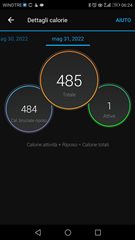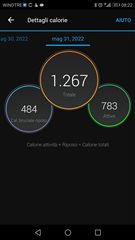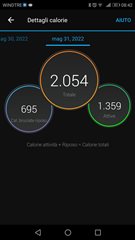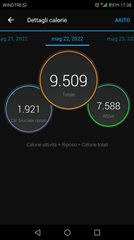Hello.
I'm a Garmin user since long time and i'm a cyclist.
My current equipment is Edge 830 (with Power2Max power meter) + Fenix 6 Pro + HRM-Pro strip.
I bought HRM-Pro since a couple of weeks and i noticed that my active calories are much higher since then. I think that this is incorrect, because calories count reported with power meter are much more accurate than calories derived from the heart rate: just think to the fact that average hearth rate can variate day by day while doing the same workout with the same amount of kj.
This morning, before going out for a cycling activity i removed the HRM-Pro from Garmin Connect so it could not synch its data.
This is what Garmin connect reported right before i started the activity. The 1 active calorie was recored by my Fenix 6 (that i removed before starting the activity too)

When i went back home i synched my Edge 830. The new calories detail was this

As you can see active calories were 783. If you take a look to my activity resume you can see that the active calories for the activity were 782 (like the 782kj).

After that i added back my HRM-Pro to Garmin Connect and let it synch. The Calories bumped to 1359.

Why calories recored with the Edge 830 + power meter are being overwrited by those calculated with the HRM-Pro?
They are less accurate than those calculated with the power meter. This doesn't make any sense.




